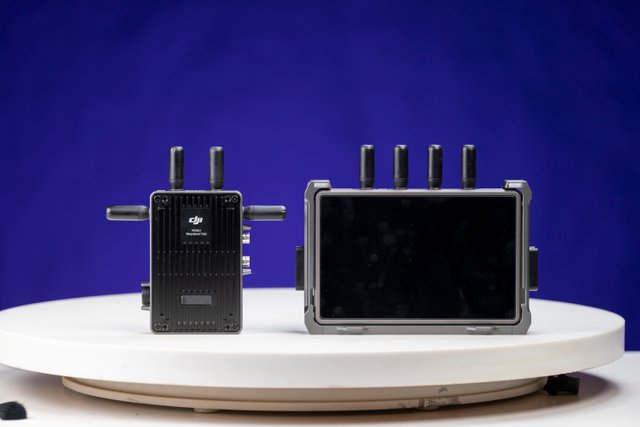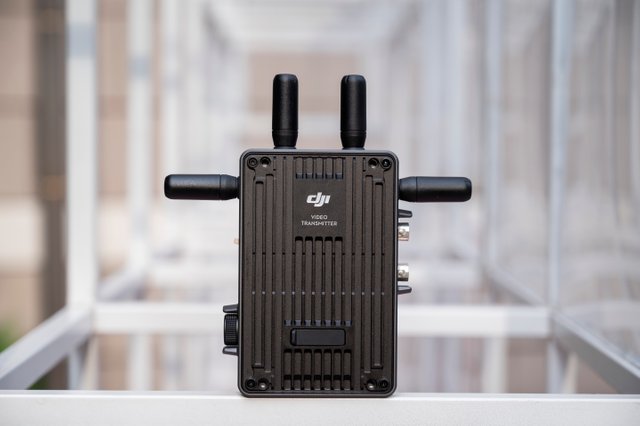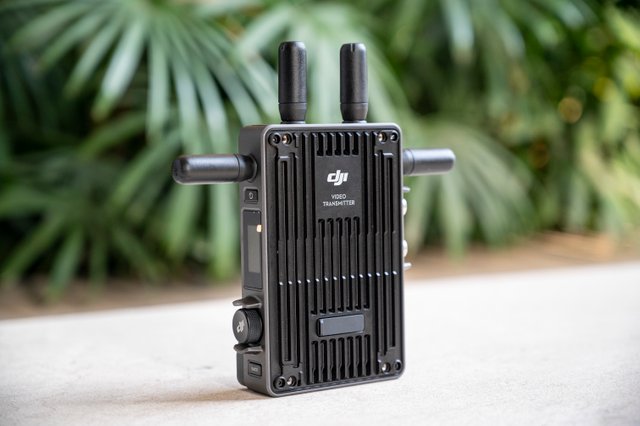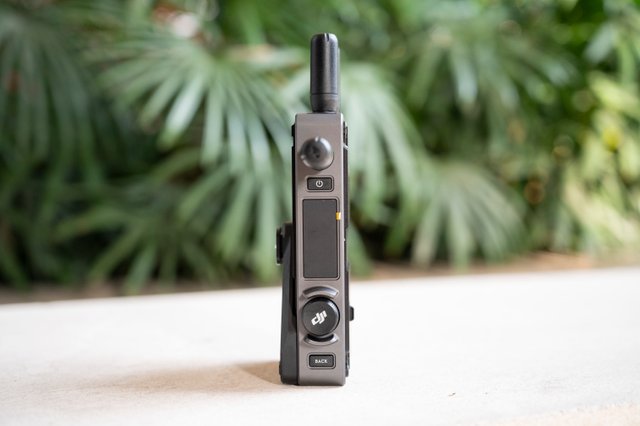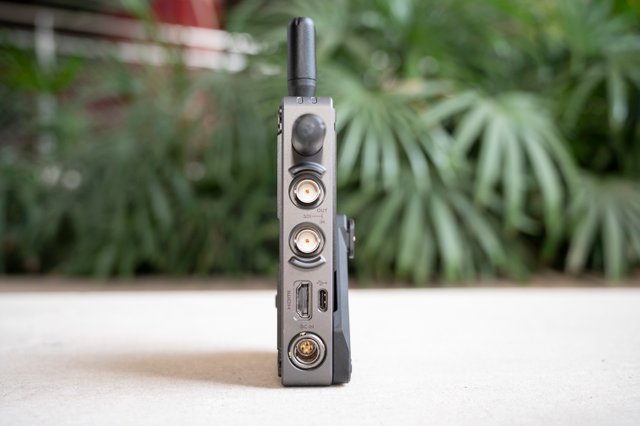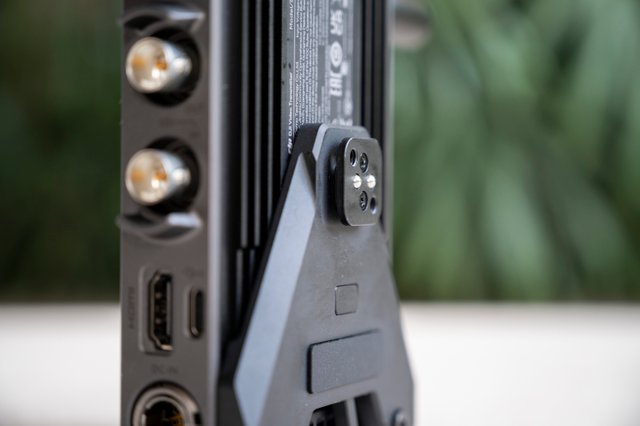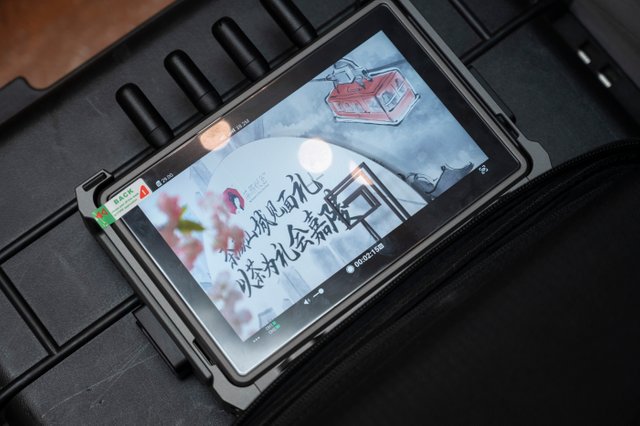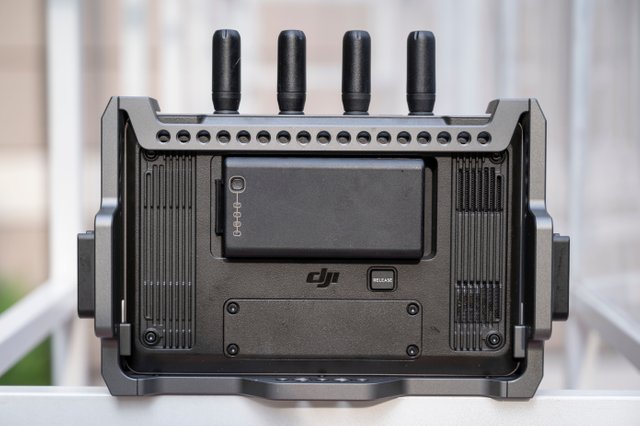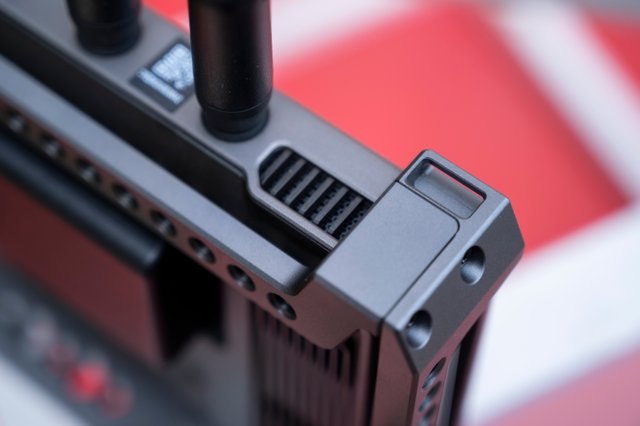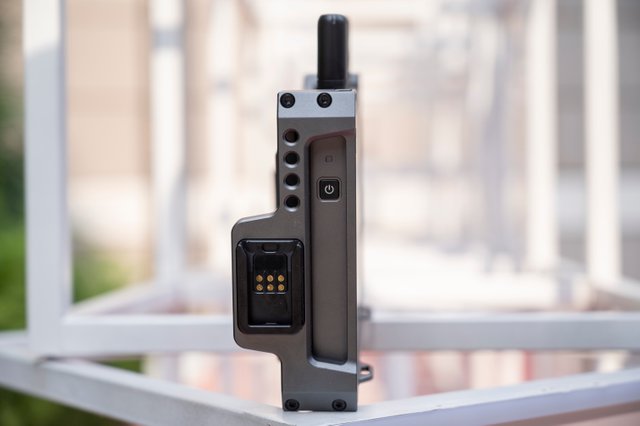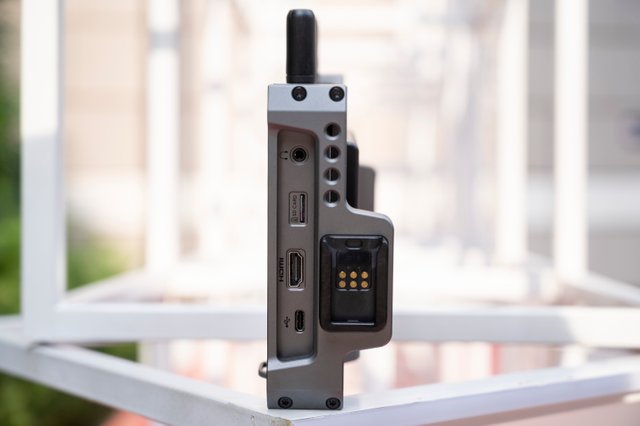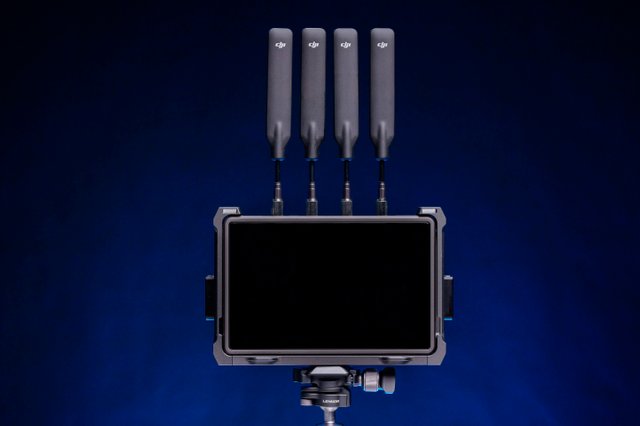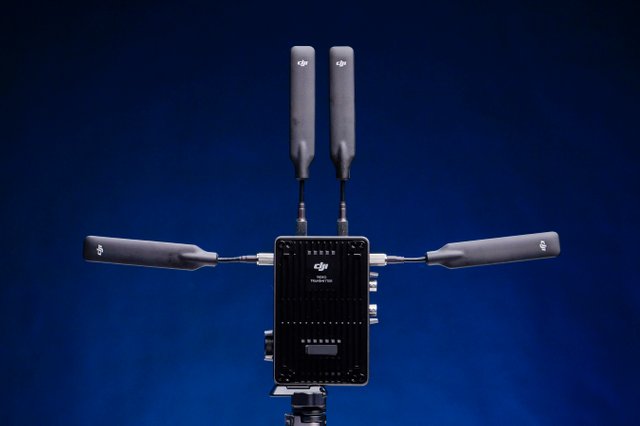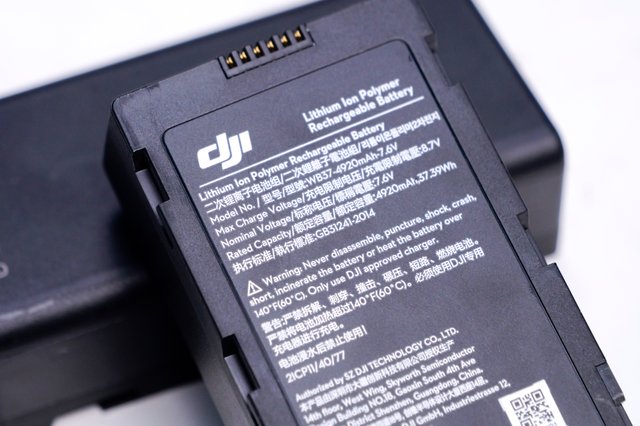DJI Transmission: What do we know about its appearance and performance
Alongside DJI RS 3 and RS 3 Pro, DJI’s first independent wireless video solution which integrates video transmitter, monitor and controller into one device is finally here.

✨ Design and Handling
The OcuSync technology, firstly found on DJI's Mavic Pro drone launched in 2016, has a range of up to 4.3 miles (7 km). After years of efforts, DJI has introduced O3 Pro transmission technology with last year’s Ronin 4D cinema camera.
The combo pack includes one DJI video transmitter, DJI remote monitor, two WB37 intelligent batteries, which can also be compatible with NP-F batteries through battery adapters, installation toolkit, protector case, one WB37 battery charging hub, and various cables.
👀 DJI video transmitter
It is square-shaped, with vertical raised lines on the front. Small and inconspicuous as the design is, it has two major effects:
✔ Stronger heat dissipation effect: compared to a whole metal panel, the metal with raised lines can better air inflow, to strengthen heat dissipation.
✔ More convenient and safe to carry out: with raised lines, the friction can be enhanced, thus ensuring slide-proof, and protecting antennas from the risk of impact.
There is also a nameplate on the front, engraved with DJI logo. In addition, it is also convenient for labeling to differentiate various devices, as for a large crew with various units, the management of them is crucial.
There are three buttons on the left side of the transmitter: a switch key, a knob with DJI logo and a return key. When the switch key is operated, a short press is required for start-up and a long press for shutdown; below it is a LCD screen for displaying parameter information, which is very intuitive.
The bottom knob and the return key can be used for all settings and operations of the transmitter. On top of that, there are two pieces of protective metal outside the knob, which can prevent the knob from misalignment.
The other side of the transmitter contains SDI OUT and SDI IN ports, as well as a full-size HDMI input port, which can be used to input video signals for machines without SDI ports. The Type-C port next to the HDMI port allows for firmware updates, unleashing huge potentials for future. A LEMO power connector is at the bottom, which allows diverse power supply methods. In addition to independent battery for power supply, you can also use the V-mount battery and stabilizer Type-C port to achieve power supply.
The back of the transmitter can be fitted with a cold shoe, directly mounted on the bottom of the RS3 PRO quick release plate, which can also be used for other cameras.
👀 DJI remote monitor
For wireless video monitoring, the device supports a 7-inch, 1,500-nit high brightness screen. The monitor includes an integrated receiver, eliminating the need for video cables running into a monitor.
On the rear, there is a battery compartment and extended interfaces. However, the protective cover at the bottom needs to be removed to extend the use of DC power supply, SDI input and output, etc.; on both sides are vertical raised lines, which can increase both the heat dissipation area and friction, thus ensuring slide-proof effect.
It’s clear that high brightness means higher heat. Therefore, the body also added some cooling vents to keep the heat as low as possible so as to provide better monitoring experience.
On the left side, there is a switch key and indicator. Besides, an external protection cage has been adopted, which largely prevents the switch button from being touched by mistake.
On the right side, from top to bottom are a 3.5mm monitor interface, TF card slot, HDMI output interface, Type-C interface. For small teams, these interfaces can already be applied to most models and scenarios; if not enough, the expansion interface on the back can be used to meet professional needs.
✨ Theoretical Test
According to the above chart, the transmitter device is very powerful in terms of transmission performance. In addition to various transmission frequency settings, the compatible input and output formats are also versatile. Even if you want to connect to older devices, there is no need for adapters.
001 💕Distance Test
DJI claims the system to be able to offer an incredible 20,000-foot on-ground transmission distance under the FCC certification, but the environment must be obstruction-free.
It’s almost impossible to find a flat and wide filed for testing in Chongqing, the Mountain City of China. In addition, we have never tested gears with a distance of 1 km and further, which poses a challenge to us.
In response, we chose an area with slope, about 2 km from a river, to test its transmission distance. Before starting up, we set up the monitor to 1.8m high and replaced the high-gain antenna to make the transmission performance more stable.
We found that the image of the transmitter was stable within the range of 2.1 km, and the transmission signal would be disturbed to some extent when going down through the steep slope. There is a large difference from the official data, but given environmental factors, the 6 km limit test without interference cannot be conducted.
In fact, ultra-remote scenarios shooting is still few. The stable transmission within 2 km, we believe, has been able to cope with the majority of shooting situations.
002💕 Latency Test
Before our test, it is necessary to recognize that the so-called “Zero Latency” actually happens only in the laboratory. In actual use, delays caused by HDMI cable, video input and output codec, will together affect the overall effect, which means that in practice there is no so-called Zero-Latency transmission, only end-to-end ultra-low latency. Luckily, as long as the latency period is less than 120ms, it is almost imperceptible to human’s naked eyes, leaving almost no impact on actual focusing or shooting operations.

Different from traditional receivers, the DJI transmitter integrates receiver and monitor into one, thus largely reducing the transmitting latency from a camera to a monitor.
As you can see from the screenshot, the latency is subtle, around 100ms. It is hard to be noticed with naked eyes.
003 💕Battery Life Test
When fully charged, the transmitter and receiver are simultaneously in working condition. We found that about three hours of working is of no problem, after which the receiver will show that the battery is too low, and after another fifteen minutes or so, it shuts down completely.
In addition to replacing the battery that comes with it, a DC power supply can also be used to extend the battery life. But with the RS 3 PRO, we found that its power consumption is still relatively high of 11W. When fully charged, the RS 3 PRO remains 60% of the power for half an hour and needs to re-charge in an hour. Therefore, it’s not recommended to use the DJI transmitter with the stabilizer shooting for a long time.
✨ Verdict
DJI Transmission introduces a new milestone in wireless video transmission with the integration of transmitter, receiver and monitor, creating a completely synchronized experience that is hard to achieve with traditional transmission products. Whether amateurs or crews can access to an excellent remote visual and audio monitoring experience.
The product will be available for purchase only from September. The combo pack will retail from authorized retails and DJI’s online store for $2,499. The independent Video Transmitter and Remote Monitor will also be available for separate purchase for $1,099 and $1,699, respectively.
